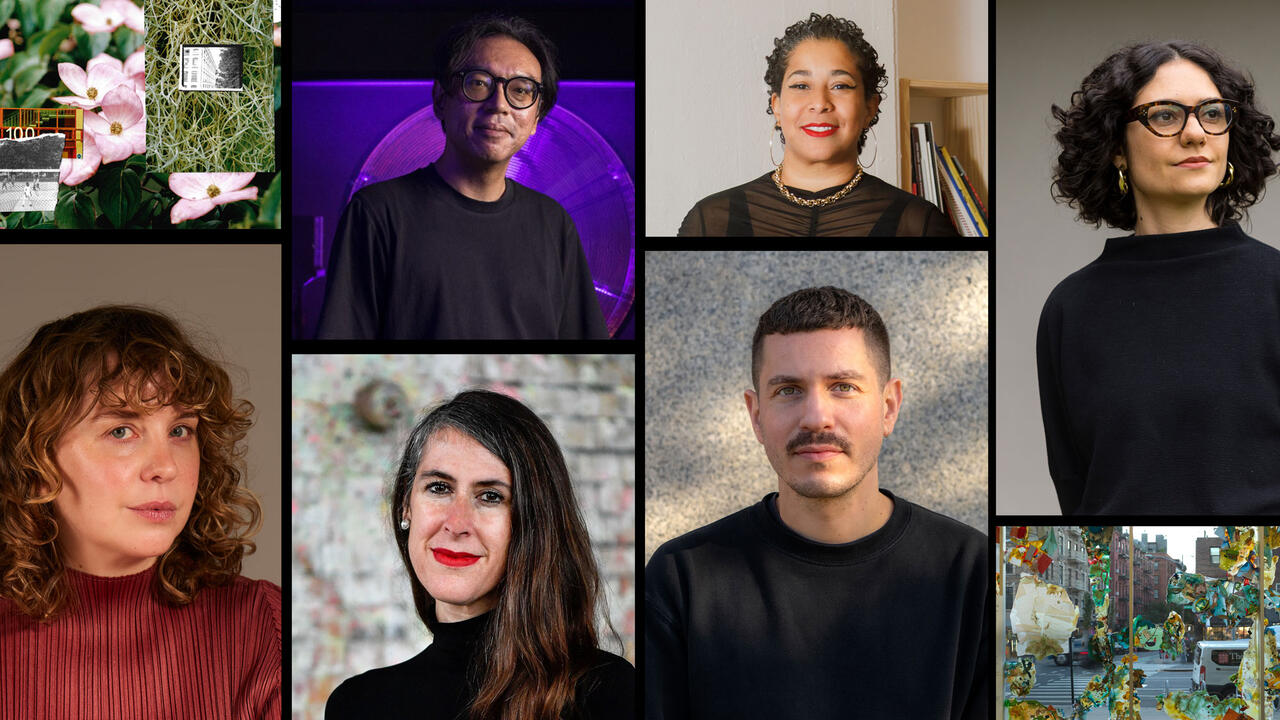Manfred Pernice

Manfred Pernice has a thing about cans. For the Berlin-based artist, each and every one of us is canned, our choices and decisions standardized and constrained by social conventions and norms. Spanning more than 20 years of his career, his solo exhibition ‘fiat (lux)’ was made up of sculptures and installations – assembled from cheap construction materials, found objects and texts or photographs, and evoking defunct public monuments or makeshift dysfunctional furniture – that seek to counter the insidious effects of social conditioning and rationalization that the can symbolizes.
The show opened with Fiat V (2008), a raised platform referencing the futuristic Fiat Lingotto factory in Turin, which opened in 1923 and boasted a spiral-shaped assembly line and a rooftop test track. Yet Pernice’s DIY-style platform departs from the precepts of mass production. It also eschews rational organization. Because it was installed in a confined space, there was nothing for visitors to see once they climbed the stairs to the top. Pernice affixed an ice-cream advertisement to the structure’s outer wall, confronting solidity with impermanence, and the intentional with the unforeseen. Fiat V is part art object and part viewing platform. By questioning the frontiers between autonomy and function, it generates, as art historian Sabeth Buchmann points out in her catalogue essay, a sense of deferment and irresolution, thereby dealing a further blow to the principle of organization.
Even more extreme than the Western European model of rationalization symbolized by Fiat V was the GDR variant, whose effects Pernice evoked here in one of his signature cans – an anthropomorphic cylindrical column belonging to the sculpture group Dosentreff: Inst.ansicht (Can Meeting: Inst.view, 2000–13). The text attached to the column tells the story of Chris Gueffroy, who was shot by East German border guards in February 1989 while attempting to escape to the West. Tiefengarage (Underground Car Park, 2008), a space filled with sculptures and objects whose sinister lighting and dull colour scheme lived up to its title, contained further references to the GDR, such as large images of bucolic landscapes or a cook who has prepared a sumptuous meal. Pernice confronts these East German images with small, indistinct black and white found photos taken in 1970s West Berlin, underscoring the gap between the purposefulness of propaganda and the unstructured banality of real life, while his use of the word ‘Tiefen’ in the title can be construed as an allusion to the human unconscious, which resists manipulation and control.
Elsewhere, Pernice questioned not just ordering systems but the principle of order itself. A series of ‘cassettes’ shallow glass-fronted boxes that frame and constrain their contents just as much as any can – were hung vertically on the wall so that the newspaper cuttings, photographs and assorted documents inside them slid downwards, forming a disorderly pile. In the next room, larger boxes displaying objects bearing signs of wear, such as empty Fanta bottles, Christmas tree decorations or wooden clothes pegs, each with a story to tell, were placed horizontally on the floor. Bearing titles such as Interdepéndance I or Indépendance (both 2013), they suggest that the different parts of a sculpture can be interdependent but also independent of each other, and thereby reject the notion of order entirely. Many of the objects in the boxes were not only unrelated but favoured individualism over order and standardization: the pack of ping-pong balls contained coloured balls as opposed to white ones, while the small jar of ketchup bore the unusual label ‘Lenôtre Paris’. Equally dismissive of order was the series of sculptures titled ‘von der Stange’ (Off the Peg, 2011): not only had Pernice roped these works off so that they could not be properly viewed, he bunched them together seemingly indiscriminately on one side of a poorly lit room.
The figure of the can likewise loomed over the sculptures installed in the courtyard, several of which conjured the ubiquitous tower blocks and housing projects whose repetitive shapes form part of our ‘conditioning’. Realized in chipboard, plywood and other inexpensive building materials, like all the works in the show, these slapdash structures – which have singled out Pernice as one of the most influential exponents of the poor-material aesthetic practiced by artists such as Guillaume Leblon and Ian Kiaer – aptly exuded a sense of indifference and neglect.
The standardized interiors of urban tower blocks also play their part in the conditioning process. The installation Sonderausstellung: “living platform” (Special Exhibition: “living platform”, 2009) undermines the aesthetic conventions governing the design of such interiors by grouping its objects according to shape. The vertical pictures adorning the back wall hung alongside elongated, no less vertical vases placed on a sideboard, while the square cushions arranged at angles to each other on the floor seemed to play with the rules of perspective by creating an impression of depth. Here too, Pernice questioned prevailing norms, with a view to countering the canning process’s stultifying effects. His work is often interpreted as a reaction to modernism, yet as ‘fiat (lux)’ showed, it offers a no less acerbic perspective on the present.












